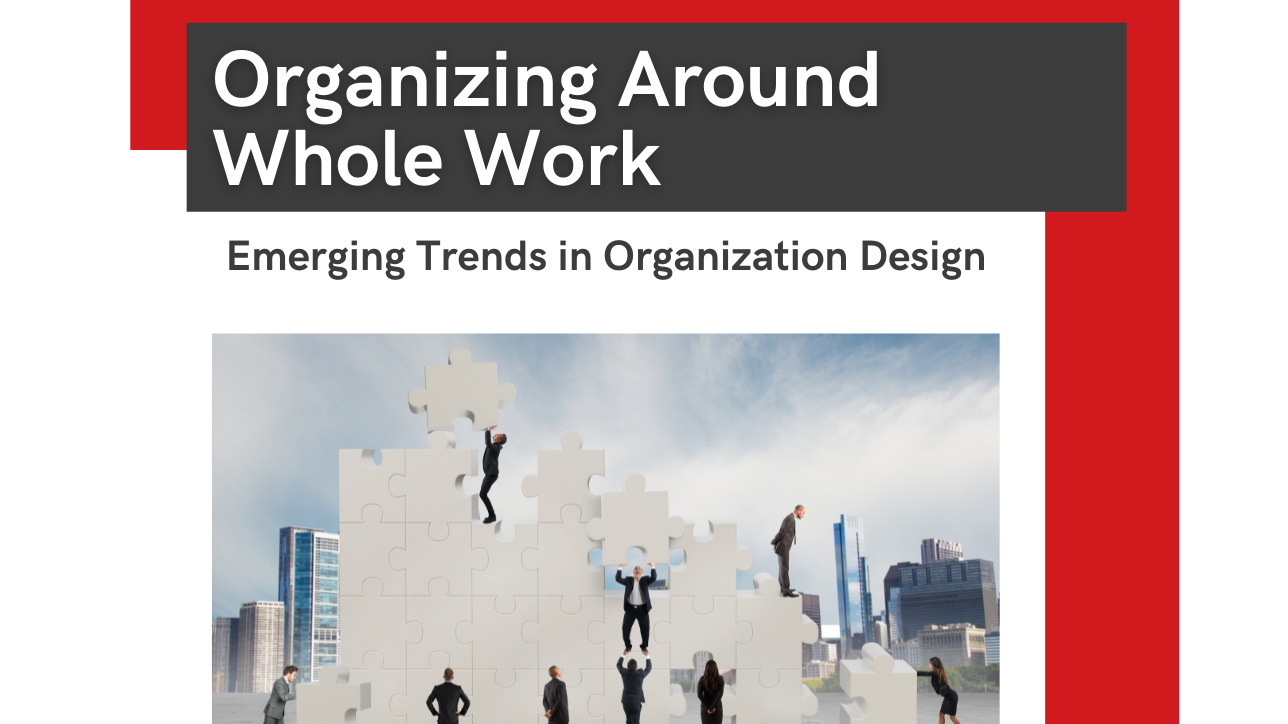Every company is in the business of monitoring and adjusting to changes within its business environment. Whether it be from external or internal sources, businesses have to address changes to stay competitive.
Over the past few weeks we’ve been talking about trends in organization design and highlighting a different trend. So far, we have talked about automation and scalability, routine and dynamic planning, the dilemma of remote work, and this week, we will be discussing organizing around whole work.
.png)
Driving out operating model complication and spending time on value-creating work is all the rage these days. While the concept of organizing around whole work is not new, it is not going anywhere soon. Actually, it’s more relevant than ever and will be critical for businesses to embrace. Your operating model should run efficiently for the sake of your company and customers, allowing your organization to focus on the work that matters most. You’ve likely heard people in various parts of your business throw out the world Agile. Agile is one way of organizing around value-creating work, but there are numerous other ways to deliver work while focusing on the end result and not getting caught up in all the details.
As businesses consider this, it is important to remove burdens and complications from the operating model. When OTM speaks about complications, we mean the following aspects embedded in an operating model and organization design:
By complications, OTM means the self-made processes, structures, practices, mechanisms, protocols and norms embedded in an operating model and organization design
All of this makes up HOW a business manages and copes with its complexity. It is OTM’s experience that nine times out of ten a business over-complicates its operating model and organization design. By driving out complications, people are required to manage differently, which forces policies and procedures to change.
Keep in mind that complications within a business aren’t the same as business complexity. Complexity naturally occurs when a business’ product and service offerings intersect with its customer mix and their varied demands and is magnified by the speed of response required.
When combined with the rising trend in automation, it makes sense that Agile is more suitable in many instances as opposed to the waterfall approach. Consider the phrase “machine learning.” Utilizing technology and automation requires cross-functional teams and sprints working around whole work . Since advanced technology will only continue to increase in criticality, all organizations should treat advancing technology as a key member of their team. This way of thinking better allows teams to organize around whole work while considering the importance role of automation and technology.
To learn more about organizing around whole work, Agile or agile, read When to Use Agile Methodology in an Operating Model.
If you’re thinking about transforming your business, considering how sustainable the change will be is a decision many people don’t consider – but need to. Contact us to learn how OTM uses collaboration to design and implement sustainable transformation.
Irena Krstic is a Consultant at ON THE MARK.
OTM is the leading global boutique organization design consultancy with offices in the USA and UK. With over 450 successful redesigns and operating model modernizations completed, OTM is owner of the industry’s most integrated, comprehensive and holistic organization design solution. OTM enables its clients to realize their future ambitions.


